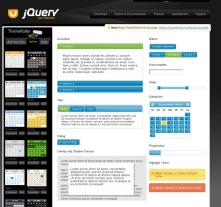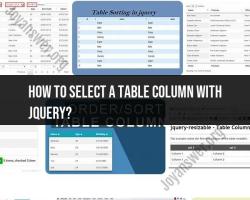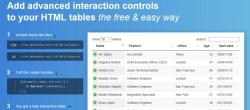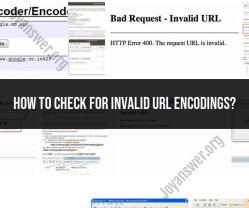How to set active tab in jQuery UI?
To set an active tab in jQuery UI, you can use the active option within the initialization of the tabs widget. This option specifies which tab should be active when the page loads or when you dynamically change the active tab. Here's an example:
HTML structure for tabs:
<div id="myTabs">
<ul>
<li><a href="#tab-1">Tab 1</a></li>
<li><a href="#tab-2">Tab 2</a></li>
<li><a href="#tab-3">Tab 3</a></li>
<!-- Add more tabs if needed -->
</ul>
<div id="tab-1">
<!-- Content for Tab 1 -->
</div>
<div id="tab-2">
<!-- Content for Tab 2 -->
</div>
<div id="tab-3">
<!-- Content for Tab 3 -->
</div>
<!-- Add content for more tabs accordingly -->
</div>
jQuery code to set an active tab:
$(function() {
// Initialize jQuery UI tabs
$("#myTabs").tabs({
active: 1 // Set the second tab (index starts from 0) as the active tab
});
});
In this example:
$("#myTabs").tabs()initializes the tabs widget on the#myTabselement.- The
active: 1option specifies that the second tab (index 1, counting from 0) should be the active tab by default when the tabs are initialized. You can change the index number to set a different tab as active.
If you want to dynamically change the active tab later based on user actions or events, you can use the option() method to update the active tab index. For instance:
// Change the active tab to the third tab (index 2)
$("#myTabs").tabs("option", "active", 2);
This code snippet would set the third tab as the active tab after the tabs have already been initialized. Adjust the index number to set a different tab as active based on your requirements.
Sure, here are the answers to your questions:
1. Methods to set an active tab using jQuery UI
There are two main methods to set an active tab using jQuery UI:
- The
tabs('active', index)method sets the active tab to the specified index. The index starts at 0, so the following code sets the second tab to be active:
$( "#tabs" ).tabs('active', 1);
- The
tabs('option', 'active', index)method is similar to thetabs('active', index)method, but it allows you to set the active tab as an option. This can be useful if you need to set the active tab based on a condition, such as the value of a URL parameter.
if (window.location.search.indexOf('tab=2') !== -1) {
$( "#tabs" ).tabs('option', 'active', 2);
}
2. Handling tab selection events in jQuery UI
To handle tab selection events in jQuery UI, you can use the tabs('select', index) method. This method takes the index of the selected tab as an argument. The following code triggers a function called tabSelected when the first tab is selected:
$( "#tabs" ).tabs({
select: function(event, ui) {
if (ui.index === 0) {
tabSelected();
}
}
});
You can also use the tabs('selected', callback) method to attach a callback function to the selected event. This callback function will be called whenever a tab is selected, regardless of the index of the selected tab.
$( "#tabs" ).tabs({
selected: function(event, ui) {
tabSelected(ui.index);
}
});
3. Customizing active tab behavior in jQuery UI
There are a few ways to customize the active tab behavior in jQuery UI:
You can use the
tabs('option', 'active', index)method to set the active tab programmatically.You can use the
tabs('select', index)method to trigger a tab selection event.You can use the
tabs('option', 'activate', callback)method to attach a callback function to theactivateevent. This callback function will be called before a tab is activated, and it can be used to prevent the tab from being activated.
$( "#tabs" ).tabs({
activate: function(event, ui) {
if (shouldTabBeActivated(ui.index)) {
return true;
} else {
return false;
}
}
});






